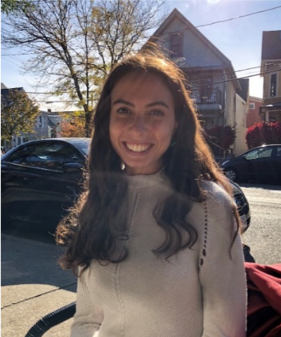For a while now, I’ve been interested in different cultural traditions around the globe and learning about culture while actually experiencing it. To me, observing and participating in how tradition is played out in a different culture is a great learning opportunity. This can lead to a greater understanding and the practice of empathy.
Being raised in a Jewish, Tunisian, French, Ashkenazi and Sephardi household (try saying that five times fast!), cultural traditions have always been a part of our family makeup. We were melding different cultural traditions in order to create our family traditions, but not lose track of the history and culture that came before us and shaped us. Growing up, for Shabbat dinner we alternated each week between something traditionally Ashkenazi, like matzah ball soup, or traditionally Tunisian/Sephardi, like couscous. I guess my curiosity about different cultures was woken up by my stomach.
I always wanted to seek out different opportunities to encounter cultural traditions around the globe. When I was in high school, I had the chance to study in Barcelona. During my time there, we celebrated the St. Jordi Festival El Día de Sant Jordi. This is a yearly festival that takes place on April 23; the city is lined with stalls and stalls of books and fresh-cut roses. On this day they honor Saint George and the anniversary of Miguel de Cervantes’ burial. In Barcelona, they celebrate by gifting books and roses to loved ones. Our classes were canceled at school and we spent the day at various book stalls and handing out roses to different friends or family members.
As I prepare for this trip to India with CJP and JDC Entwine, I’m eager for this new cultural experience. Not only do I get the occasion to travel to India, already a new cultural experience for me, but I have the chance to learn about the Bene Israel Indian Jewish community. This ancient Jewish community is primarily based in Mumbai and can trace its roots back to 586 BCE. During our travels, we will have the opportunity to meet with Indian Jewish young adults to learn and understand more about this historical community and their cultural traditions.
One of these traditions that we will get to experience is a Jewish Indian wedding. There are so many beautiful wedding traditions in the larger Indian and Jewish communities that it will be an honor to see how this couple takes their personal cultural makeup within the Jewish Indian community to create their wedding. What elements from traditional Indian or traditional (Western) Jewish ceremonies will this couple include? Will there be a mehndi ceremony, an Indian tradition in which the bride’s hands are covered with designs in henna? Will there be a chuppah, the traditional Jewish wedding canopy? Will there be the breaking of a glass at the end of the ceremony? How many ceremonies and celebrations will there be? Where will the wedding take place? Will it be in a synagogue? Will the sheva brachot prayers be read? What language will be used for the religious elements of the ceremony? What will be the wedding attire? Will the bride wear a sari or lehenga in red or another vibrant color? Or a Western-style white gown?
All these questions and more swarm through my mind as I impatiently and excitedly prepare to witness this beautiful melding of cultural traditions. This wedding will be steeped in tradition yet entirely unique to the couple, and I, for one, cannot wait to see the traditions come together on this beautiful occasion.
Follow along:
Blog: JewishBoston.com
Facebook: Project Inspire
Twitter: @CJPIsrael & @CJPBoston
Emma Scheinmann is an aspiring museum educator and current graduate student at Tufts University in the M.A. museum education program. She received a B.A. from McGill University in art history and Russian studies. Emma has worked in museums in Russia, Israel and France. She lives in Somerville.













